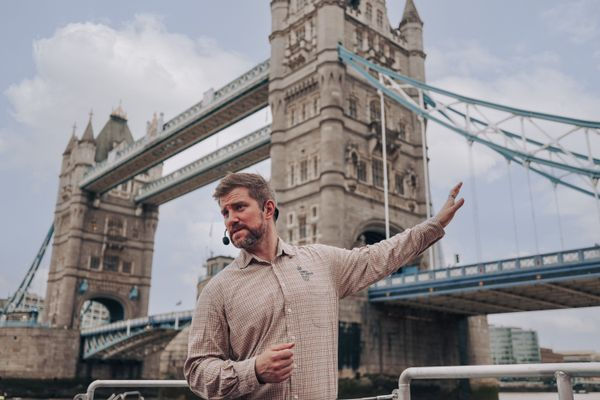The Hunterian Museum at the Royal College of Surgeons of England reopens to the public
- Richard

- May 18, 2023
- 3 min read
After a six-year closure, the Hunterian Museum bursts back onto London’s cultural scene with the launch of a new website and the announcement that the museum doors will open on Tuesday 16 May. The entrance will be free. The £4.6 million museum re-design, by award-winning design studio Casson Mann, is part of a larger redevelopment of the Royal College of Surgeons of England’s headquarters at Lincoln’s Inn Fields in central London.

The Hunterian Museum includes the display of over 2,000 anatomical preparations made by the 18th-century surgeon anatomist John Hunter, from whom the museum takes its name. The specimens are displayed alongside instruments, equipment, models, paintings and archive material, which trace the history of surgery from ancient times to the latest robot-assisted operations.

The mesmeric and ethereal homage to surgery, Concourse by artist Barbara Hepworth will be on permanent display in the museum for the first time. Part of Hepworth’s Hospital Drawings series, made in 1948, the same year the NHS was born, Hepworth wanted to portray the ‘extraordinary beauty of purpose and co-ordination’ of surgical teams. Teamwork is also at the heart of a newly commissioned film of an orthopaedic operation performed at the Wirrall University Teaching Hospital. With the use of time-lapse editing a 90-minute operation is condensed to just ten, revealing a ballet-like choreography as the surgical staff give all their attention to the patient, centre stage. These and many other new audio visuals and objects on public display for the first time can also be found on the Hunterian Museum’s new website. Designed by Brighton based digital agency Cogapp, the new platform rolls out the Hunterian Museum to a global audience, opening up new opportunities for debate and engagement with one of the world’s most influential medical collections.

Dawn Kemp, Director of Museums and Special Collections at the Royal College of Surgeons of England, said: “This May marks the 210th anniversary of the Hunterian Museum opening at the Royal College of Surgeons of England. It is tremendously exciting to be able to welcome the public back after a six-year closure. “The Hunterian Museum has been a place where history has been made, both for good and bad. The place where dinosaurs were named; where Charles Darwin came for advice on the fossils he found half the world away; where the pioneer of computing, Charles Babbage sent his brain to be put on display. It is also where some of those closely involved in the Western ‘colonial project’ developed sinister and awful ideas on racial theory. “Its history makes it a unique place to contemplate what it is to be human. A place to reflect and consider our shared and finite natural world and our responsibility to care for the well- being of our fellow humans and all living things. A place to exchange ideas and views and to review our shared histories through the widest possible lens.”

The result is a series of eight galleries that trace the development of medical and surgical understanding and practice through the centuries. Organised in chronological order, the journey begins with examples of ancient anatomical and medical knowledge, before introducing the social and scientific context of the 18th century and John Hunter, anatomist, physician and surgeon for which the museum is named. The story of John Hunter forms the core of the new museum and his self-professed “grand curiosity” inspired the interpretive concept and subsequent narrative journey. For the first time, visitors will be able to engage deeply with Hunter’s insatiable curiosity and scientific enquiry which led to discoveries and innovations in medical and surgical knowledge and practice. Exploring his life and work across three galleries, subdivided into themed rooms, visitors will appreciate the scientific legacy of his extraordinary anatomical specimens. Displayed in the Long Gallery, this delicately illuminated collection of 3,100 specimen jars forms a jewel-like wunderkammer revealing intricate and beautiful detail.
The final galleries explore modern surgical breakthroughs and state-of-the-art techniques used today and in development, such as robotics and augmented and virtual reality assisted surgery. The culmination of scientific knowledge, understanding, developments and innovations is represented in a series of specially commissioned interviews with patients and RCS England fellow surgeons, and a time-lapse of a modern surgical procedure. Throughout the museum, Casson Mann has sought to convey the essential humanity at the heart of medical endeavour. Patient stories highlight the human outcomes of experimental procedures and inventions. Colourful Georgian palettes and richly gilded portraits and paintings place people and events in a social context and lend warmth and vibrance to clinical objects and artefacts, while specially commissioned soundscapes subtly elevate the narrative experience. Interactive touchscreens and tabletop projections encourage curiosity and engagement.

The Hunterian Museum will re-open from the 16th May, at the Royal College of Surgeons of England, Lincoln’s Inn Field, London. Entrance is free, check the website for details...



Comments